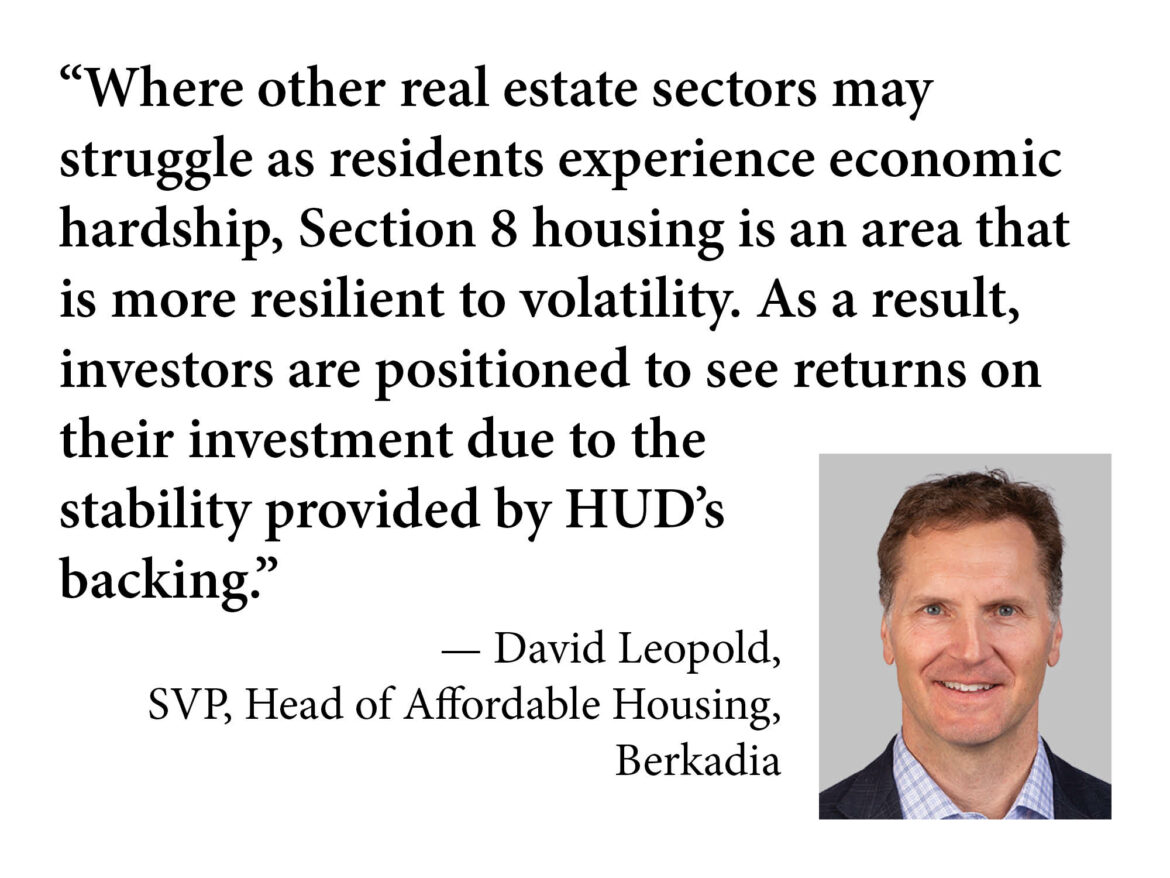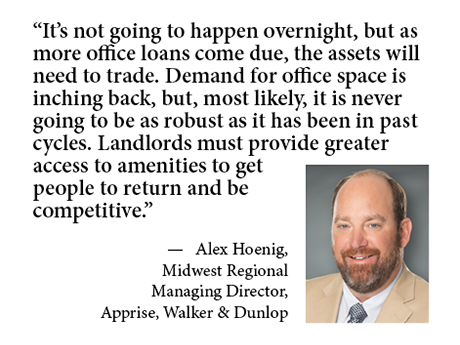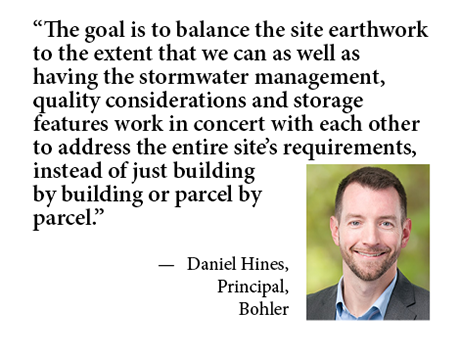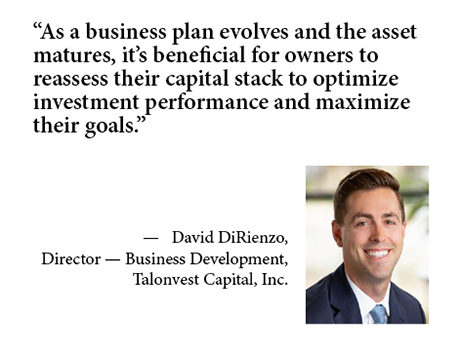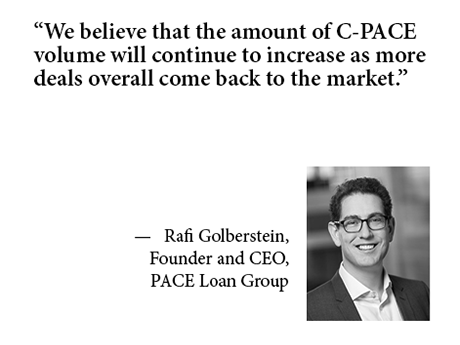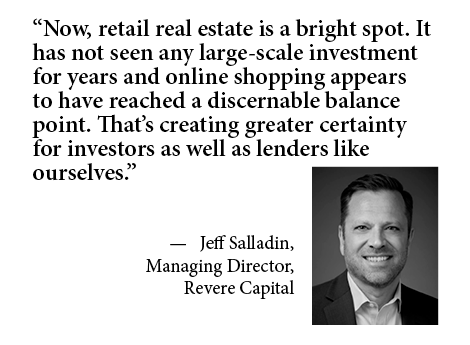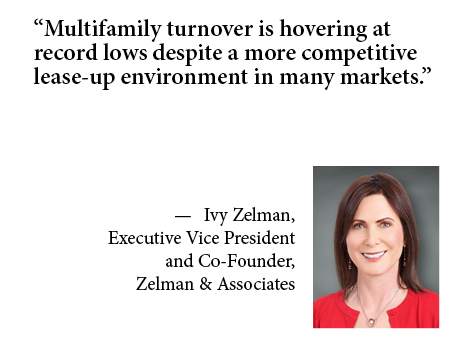By David Leopold, SVP, Head of Affordable Housing, Berkadia In today’s shifting real estate landscape, investors increasingly prioritize stability and long-term value. One sector that has consistently demonstrated stability is affordable housing — particularly Section 8 properties backed by the U.S. Department of Housing and Urban Development (HUD). With guaranteed rental income and high demand, Section 8 housing has become an attractive investment vehicle for those looking to diversify their portfolios while contributing to the critical need for affordable housing. As part of this trend, in 2024 Berkadia financed $837 million and sold more than $172 million in Section 8 properties, including the sale and financing of Lauderhill Point, a Section 8 affordable housing community in Fort Lauderdale, Fla. This arrangement underpins the firm’s affordable housing expertise, employing production leaders with an average of 25 years in the sector. For investors exploring opportunities in affordable housing, success depends on understanding the unique benefits and requirements of Section 8 properties. Section 8 Housing as a Safe Haven The largest federal subsidized housing program in the United States, project-based Section 8 provides financial assistance to millions of households across the country, making it a steady source of demand that can give …
Content Partner
AcquisitionsContent PartnerDevelopmentFeaturesIndustrialLeasing ActivityLee & AssociatesLoansMidwestMultifamilyNortheastOfficeRetailSoutheastTexasWestern
Lee & Associates Report: Final Quarter 2024 Net Absorption Trends in Industrial, Office Likely Temporary; Multifamily, Retail Net Absorption Trajectories Stickier
Lee & Associates’ 2024 Q4 North America Market Report looks back at the tenant demand, absorption rates and vacancy trends for industrial, office, retail and multifamily sectors nationwide to extrapolate what might be on the horizon for 2025 and beyond. While net absorption in industrial and retail is down from the same period in 2023, the reasons — too much supply in the pipeline versus too little — are opposite for each sector. Similar mirroring due to reverse factors can be seen in the net positive absorption last quarter in office and multifamily. Net industrial absorption was down 45 percent in the last quarter of 2024, compared to the same quarter in 2023. However, vacancy rates are likely to decline this year due to a lower volume of construction starts completing in 2025. New in-office policies among prominent companies contributed to the office market’s second consecutive quarter of positive absorption, but overall, office vacancy numbers are expected to continue rising until 2026. Low vacancy and factors challenging development meant very few options for retail tenants seeking new, high-quality space. Retail tenants in the food and beverage arena have been taking advantage of increased national spending on food outside the home …
Content PartnerFeaturesIndustrialMidwestMultifamilyNortheastOfficeSoutheastTexasWalker & DunlopWestern
Multifamily, Industrial, Office Transaction Activity Trends Upward Amid Shifting Valuation Landscape
The spike in interest rates nearly three years ago brought investment sales to a virtual standstill, as deep disagreements over valuation between buyers and sellers dominated the market. While recent Federal Reserve cuts to the federal funds rate raised hope for a resurgence in transactions, ongoing volatility in the bond market, concerns about reemerging inflation and uncertainty over fiscal and monetary policy continued to weigh on a full-blown rebound in investment activity. The uncertain environment makes it difficult for investors to easily evaluate commercial property values, underscoring the importance of access to comprehensive, real-time data on transactions, market fundamentals and emerging trends, says Alex Hoenig, MAI, Midwest regional managing director at Apprise, Walker & Dunlop’s independent valuation firm. “Our understanding of current values for commercial real estate relies on transactions actually taking place, and sales velocity has started to inch back up,” reports Hoenig. “But there’s no question that there has been a lot of volatility in the market, which requires a local expert with access to a strong network and a constant pulse on market comparables.” Walker & Dunlop launched Apprise in 2020 to accelerate technology-driven solutions in the commercial real estate sector. Apprise serves owners and investors nationwide, …
By David DiRienzo, director — business development, at Talonvest Capital, Inc. This is part two of a two-part series discussing the key drivers behind transaction volume and the steps owners can take to ensure they are well positioned going forward. As highlighted in part one, despite substantial changes in the market over the past few years, the capital markets continue to offer quality financing solutions for real estate owners. Part two of this article series delves into two key drivers of current financing activity: elective refinancing to optimize the capital stack and the initiation of new business plans. Given the plethora of value-add projects in the pipeline and the interest in undertaking new business plans as equity capital returns to the market, these financing strategies are taking on greater importance than in past years. Interestingly, elective refinancing and starting a new business plan are two scenarios where the borrower’s actions are optional because an impending maturity is not a consideration. For this reason, it is important that borrowers understand the nuances behind these strategies as well as the approach that a capital expert might take. Elective Refinancing to Maximize Investment Performance While loan maturities trigger many refinancings, owners run into a …
Some commercial real estate developers work primarily with architects and engineers to establish a project’s scope and expected cost, leaving the selection of a general contractor or project manager until they are nearly ready to break ground. And by following this traditional approach, they may be leaving money on the table. A better practice is to engage contractors during project planning, industry experts advise. That’s because experienced contractors can provide practical insight into pricing and availability of materials and labor, informing critical planning decisions. Those same builders can be a sounding board for site civil engineers mapping out site preparation, utility installation, access and sequencing for the various tradespeople working on a project. “Involving a general contractor early is particularly beneficial for large-scale or phased construction projects,” says Daniel Hines, a principal in Bohler’s Charlotte office. “It enables us to approach the design more strategically, reduce costs and deliver more accurate timelines.” “The overall goal of getting a general contractor and an engineer working together is to maintain your schedule and your budget,” agrees Jeff Mitchell, director in the Charlotte, North Carolina office of Duffey Southeast Construction Inc. “Engineers are the experts at designing projects, but ultimately it is the …
By David DiRienzo, director — business development, at Talonvest Capital, Inc. This is part one of a two-part series discussing the key drivers behind transaction volume and the steps owners can take to ensure they are well-positioned going forward. Much has been written about the decline in transaction volumes over the last 24 months. There is no question that properties are changing hands at a slower pace compared to the activity seen during the low interest rate environment that prevailed during the pandemic. Even so, many investors continue to seek out financing to address a variety of circumstances. In today’s market, beyond simply refinancing due to an upcoming loan maturity, three scenarios have been driving financing activity among owners of self-storage, multifamily and industrial assets: restructuring debt as a project evolves, elective refinancing to improve performance and capitalizing on a new business plan. We will cover the first theme below in part one of this two-part series. Business Plan Progression Offers Opportunities for Owners to Unlock Value As a business plan evolves and the asset matures, it’s beneficial for owners to reassess their capital stack to optimize investment performance and maximize their goals. Completing a refinance at a natural project inflection …
Content PartnerDevelopmentFeaturesIndustrialLeasing ActivityLee & AssociatesMidwestMultifamilyNortheastOfficeRetailSoutheastTexasWestern
Lee & Associates: Absorption Is Positive Across All Property Types According to Third-Quarter Report
Perhaps the most salient information within Lee & Associates’ 2024 Q3 North America Market Report pertains to the office market. The third quarter of 2024 ended nine continuous quarters of negative net absorption in the office sector. However, additional occupancy losses may be on the horizon for the office market, even as supply pressures ease for this property type. Positive retail news has led to positive industrial news, as rising demand for retail goods has bolstered tenant demand for industrial space just as additional industrial inventory is coming on line. Steady economic growth and continuing impediments to home ownership have created strong absorption in the multifamily sector. Rent growth and vacancy rates have largely plateaued. Lee & Associates has made their complete third-quarter report available here (with more detailed information broken down according to property type). Below is an overview of the strengths and challenges in the industrial, office, retail and multifamily sectors. Industrial Overview: U.S. Demand Spikes Industrial demand across the United States dramatically improved in the third quarter. There were 52.8 million square feet of positive net absorption in the country in the third quarter, a 76 percent jump from the same period a year ago and more than double the …
Content PartnerData CentersFeaturesHospitalityLife SciencesLoansMidwestMultifamilyNortheastOfficeSelf-StorageSoutheastTexasWestern
C-PACE Maintains Appeal in Lower Interest Rate Environment
The Federal Reserve’s decision to begin aggressively hiking the federal funds rate in 2022 threw the commercial real estate market into turmoil. Property investors found it difficult to refinance much cheaper short-term loans that were often used to renovate or develop properties. However, the interest rate spike greatly enhanced the viability of commercial property assessed clean energy (C-PACE) financing, a type of loan that becomes an assessment that borrowers pay along with their tax bill. The program emerged more than a decade ago and generally pays for energy, water and seismic resiliency upgrades in new construction and rehabs, including retroactively. As a result, developers embraced C-PACE as they sought ways to pay down debt to secure new financing or loan extensions and modifications. Sponsored: A smarter way to finance your next CRE project – PACE Loan Group Now that the Federal Reserve has reversed course with its 50-basis-point federal funds rate reduction in September — and with Wall Street anticipating additional rate cuts before the end of the year — will C-PACE demand start to cool? Don’t count on it, says Rafi Golberstein, founder and CEO of PACE Loan Group, a direct lender of C-PACE financing based in Minneapolis, Minn. …
For more than seven months in 2024, the commercial real estate investment market remained on a sluggish path. High interest rates continued to not only challenge many asset owners who needed refinancing, but also buyers and sellers looking to make deals. For instance, some $174.7 billion in property investment sales during the first half of the year was 7 percent below a year earlier, according to MSCI Real Assets. In such uncertain times, it’s not unusual for the commercial real estate market to experience bouts of bifurcation. Typically, those are marked by trends such as rising demand for higher quality offices during economic slumps when tenants can fetch discounted rents. Early in the recovery phase, it’s not unusual for investment to flow into tech-oriented metros at the expense of other cities. The Federal Reserve’s aggressive hike of the federal funds rate has created another category of bifurcation, especially as it relates to floating-rate bridge debt and how lenders are managing their loan portfolios. That is, the difference between the performance of assets depending on when owners financed the properties, says Jeff Salladin, a managing director with Dallas-based private debt fund Revere Capital. “It’s a question of vintage,” he explains. “Loans …
Content PartnerDevelopmentFeaturesLeasing ActivityLoansMidwestMultifamilyNortheastSoutheastTexasWalker & DunlopWestern
Multifamily Markets See Silver Lining Despite Economic Headwinds
Like other property sectors, rental housing assets have experienced big swings in fortunes over the past few years. Historically high rent growth during the pandemic came to a halt amid new supply in many markets. And the end of cheap debt has stymied investment sales and is stressing investors who paid handsomely for apartments using short-term financing. But the situation could be worse. Housing remains in high demand, and despite higher mortgage rates and a collapse in home sales, a severe lack of inventory on the market continues to prop up home values and price out would-be buyers. In May, home prices across the country increased 5.9 percent over the previous year, according to the latest S&P CoreLogic Case Shiller U.S. National Home Price NSA Index. Rental housing owners and operators are the obvious beneficiary of those challenges, says Ivy Zelman, executive vice president and co-founder of Zelman & Associates, a Walker & Dunlop company that provides housing research, analysis and consulting. Move-outs attributed to home purchases clearly illustrate the trend. An apartment and single-family rental operator in Phoenix recently told Zelman that such move-out activity has dropped to about 13 percent from an historical average of 30 percent, she …


